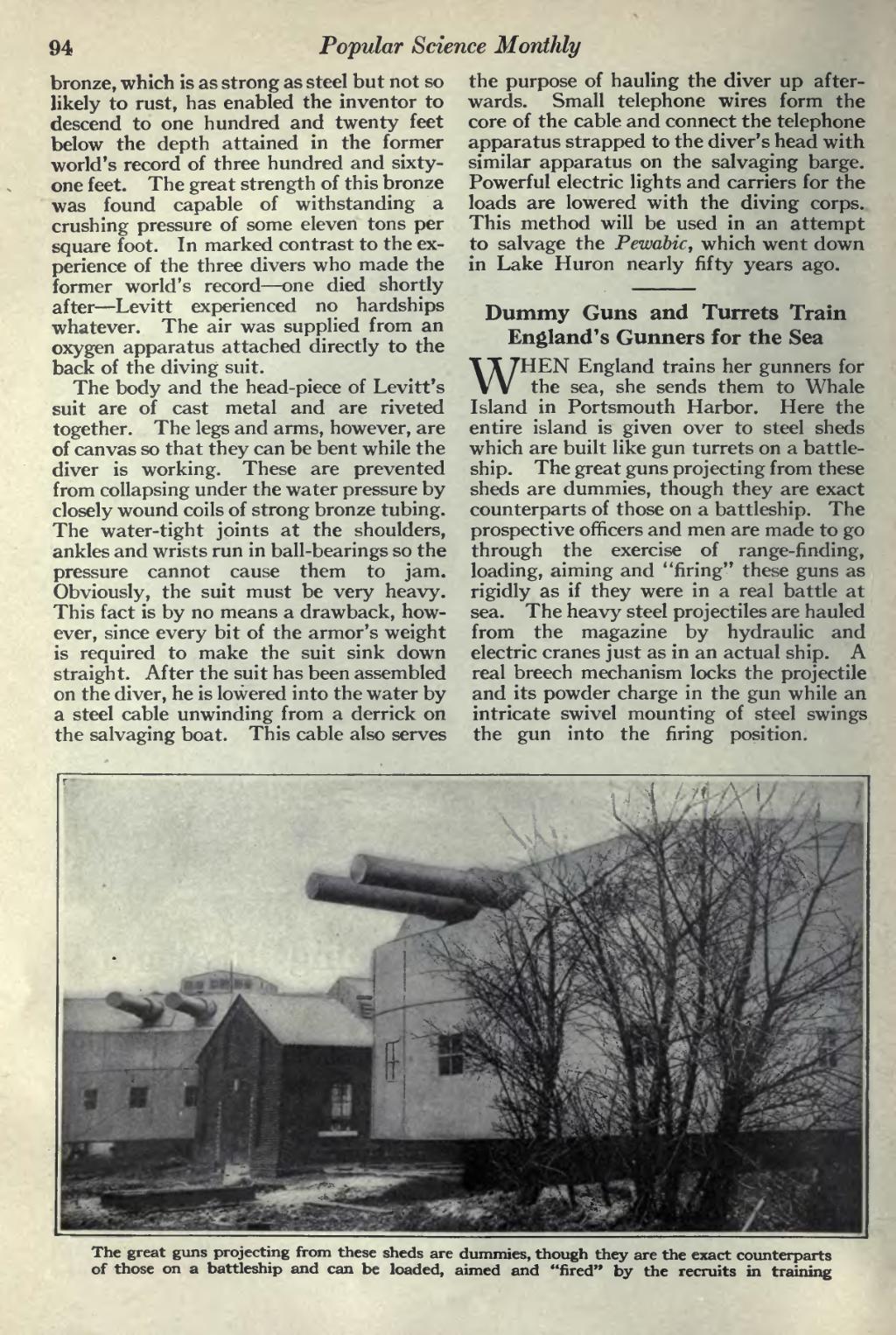Popular Science Monthly
��94
��bronze, which is as strong as steel but not so likely to rust, has enabled the inventor to descend to one hundred and twenty feet below the depth attained in the former world's record of three hundred and sixty- one feet. The great strength of this bronze was found capable of withstanding a crushing pressure of some eleven tons per square foot. In marked contrast to the ex- perience of the three divers who made the former world's record — one died shortly after — Levitt experienced no hardships whatever. The air was supplied from an oxygen apparatus attached directly to the back of the diving suit.
The body and the head-piece of Levitt's suit are of cast metal and are riveted together. The legs and arms, however, are of canvas so that they can be bent while the diver is working. These are prevented from collapsing under the water pressure by closely wound coils of strong bronze tubing. The water-tight joints at the shoulders, ankles and wrists run in ball-bearings so the pressure cannot cause them to jam. Obviously, the suit must be very heavy. This fact is by no means a drawback, how- ever, since every bit of the armor's weight is required to make the suit sink down straight. After the suit has been assembled on the diver, he is lowered into the water by a steel cable unwinding from a derrick on the salvaging boat. This cable also serves
��the purpose of hauling the diver up after- wards. Small telephone wires form the core of the cable and connect the telephone apparatus strapped to the diver's head with similar apparatus on the salvaging barge. Powerful electric lights and carriers for the loads are lowered with the diving corps. This method will be used in an attempt to salvage the Pewabic, which went down in Lake Huron nearly fifty years ago.
��Dummy Guns and Turrets Train England's Gunners for the Sea
WHEN England trains her gunners for the sea, she sends them to Whale Island in Portsmouth Harbor. Here the entire island is given over to steel sheds which are built like gun turrets on a battle- ship. The great guns projecting from these sheds are dummies, though they are exact counterparts of those on a battleship. The prospective officers and men are made to go through the exercise of range-finding, loading, aiming and "firing" these guns as rigidly as if they were in a real battle at sea. The heavy steel projectiles are hauled from the magazine by hydraulic and electric cranes just as in an actual ship. A real breech mechanism locks the projectile and its powder charge in the gun while an intricate swivel mounting of steel swings the gun into the firing position.
���The great guns projecting from these sheds are dummies, though they are the exact counterparts of those on a battleship and can be loaded, aimed and "fired" by the recruits in training
�� �
